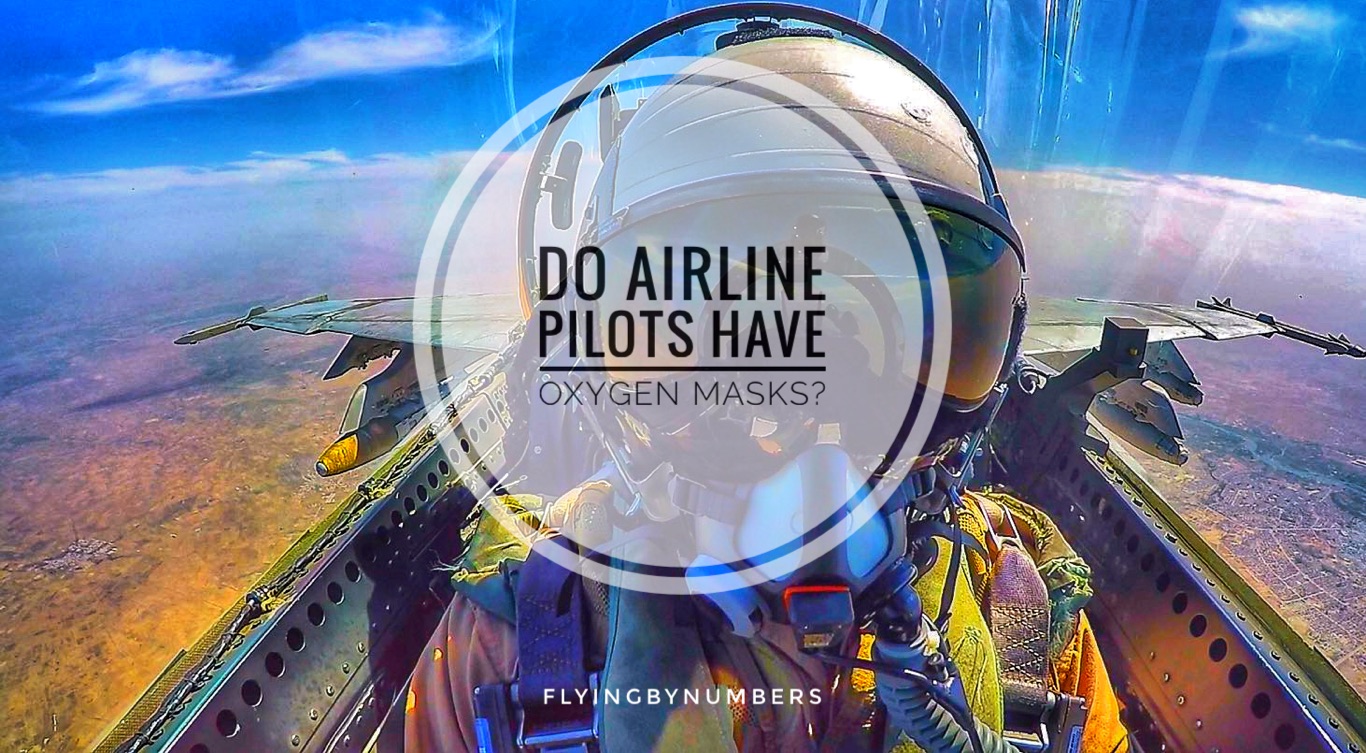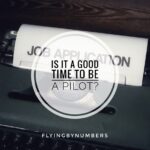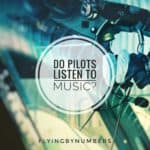Picture a fighter pilot in the cockpit. It’s usually with an assortment of high-tech gear. Pressurised suits, full face helmets, and a full pilot oxygen mask system.
Airline pilot cockpits look a bit more… well… relaxed! So, you might be wondering, why do airline pilots not wear oxygen masks like fighter pilots?

As a passenger, when boarding a commercial flight everyone is familiar with the initial Captain’s PA, followed by a safety demonstration including how to use the drop-down passenger oxygen system. Yet, take a glance in the cockpit. Above the pilot’s head isn’t a panel storing oxygen masks, but several rows of switches and instruments.
So, what gives? Do airline pilots have oxygen masks at all? And do they use the same oxygen system as the passengers?
You might be a surprised to hear that airline pilots do have full face oxygen masks, similar to fighter pilots. They are just hidden away out of sight!
In this blog post, we will explore why this is the case and what kind of oxygen facilities are available to commercial airline pilots.
Why do pilots need oxygen masks anyway?
In short, when an aeroplane is at cruising altitude, the air outside is very thin. Not only is the air thin, but it also contains less oxygen than at lower altitudes. This thin air is great for fuel efficiency, but it would be impossible for us to survive at the typical cruising altitude of 36,000 ft (ca. 11 km).
As a result, we pressurise the cabin in commercial aircraft. This keeps the cabin air significantly thicker than the outside air, similar to the air density found at a much lower height. This is usually between 6,000-8,000ft.
- The air inside a commercial aircraft at cruising altitude is slightly thinner than at sea level, but is perfectly safe, and we can function normally.
- If the pressurisation system fails, or, there is a structural failure like losing a window, the inside air in the aircraft would rapidly equalise to the outside air.
- In the extremely rare event of this occurring, we wouldn’t be able to survive breathing in the thin air, and would suffer a condition known as Hypoxia.
- Hypoxia is a condition where your body tissues and cells are deprived of oxygen. It’s a serious condition that can lead to unconsciousness and even death.
This is why, all commercial airlines will have oxygen masks for both the pilots and passengers. We can use these masks to survive the short time until the pilots have descended the plane to a lower altitude, where we can remove them and breathe normally.
So, if airline pilots need oxygen masks, why don’t they constantly wear them like fighter pilots?

The answer is twofold.
Firstly, not all military aircraft are pressurised. For a commercial aircraft with 300 seats, toilets, and galley areas, it makes sense to invest in a heavy, expensive air conditioning system. The entirety of the cabin in a modern aircraft has conditioned, warmed and breathable air.
For many military aircraft, with only one or two crew, a complex system like this doesn’t make sense. Why pressurise the whole cabin of a fighter jet? Nobody is getting up to walk to the bathroom in the middle of a dogfight!
Aircraft designers solve this problem by providing the pressurisation, heating and cooling, on a personal level — it’s all in the suit. This is one of the reasons why you’ll see military pilots wearing oxygen masks, the aircraft doesn’t have conditioned air for them to breathe.
The second reason relates to how high aircraft fly, and a concept known as the time of useful consciousness. Most commercial aircraft fly below 45,000 ft (ca. 14 km). A common typical cruising altitude is around 36,000 ft (ca. 11 km).
So, what happens if something goes wrong? How long do you have to put on an oxygen mask before you can’t think straight due to a lack of oxygen? This thinking time is called the time of useful consciousness (TUC) and it varies dramatically with altitude.
| Altitude | Time to put on o2 mask |
|---|---|
| FL300 (30,000ft) | 30 to 60 seconds |
| FL350 (35,000ft) | 15 to 30 seconds |
| FL400 (40,000ft) | 7 to 10 seconds |
| FL430 (43,000ft) | 5 seconds |
Military aircraft often fly significantly higher than commercial aircraft — it’s not uncommon for aircraft to fly above 60,000 ft (ca. 18 km).
There is a 15-30 second window of TUC, that most commercial pilots will have to don their emergency oxygen masks. But for those flying significantly above that, if the aircraft lost pressurisation, there would simply be no time to recognise this before the pilots became incapacitated. For safety reasons, when flying at extreme altitudes, it’s best to always fly with the mask on.
Wearing an oxygen mask all the time has significant downsides. They are uncomfortable to wear for long periods of time, but more importantly can make radio calls, and, interacting with other pilots and the cabin crew very difficult.
Airline pilots spend a large amount of time in the cruise, and, unlike military pilots, they are routinely flying in some of the busiest airspace in the world, continually broadcasting on the radios. For commercial pilots, the benefits of routinely wearing oxygen masks doesn’t outweigh the negatives. This means that they are only required to don them in an emergency.
What type of oxygen masks do airline pilots have?
Interestingly, pilots don’t share the same type of oxygen system as the passengers.
While they don’t wear them all the time, commercial pilots have full face oxygen masks that are similar in style to military pilots.
Unlike the familiar passenger drop-down masks, airline pilot’s masks are located next to their seats in a flip top side compartment so that they can put them on quickly and easily.
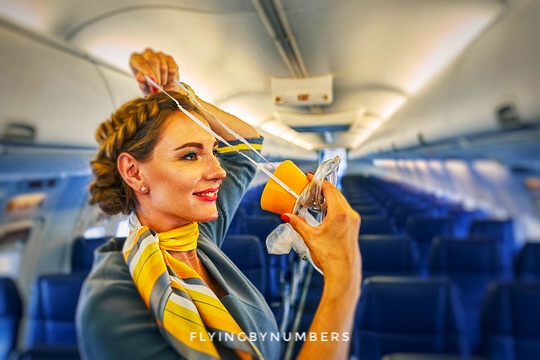
Versus
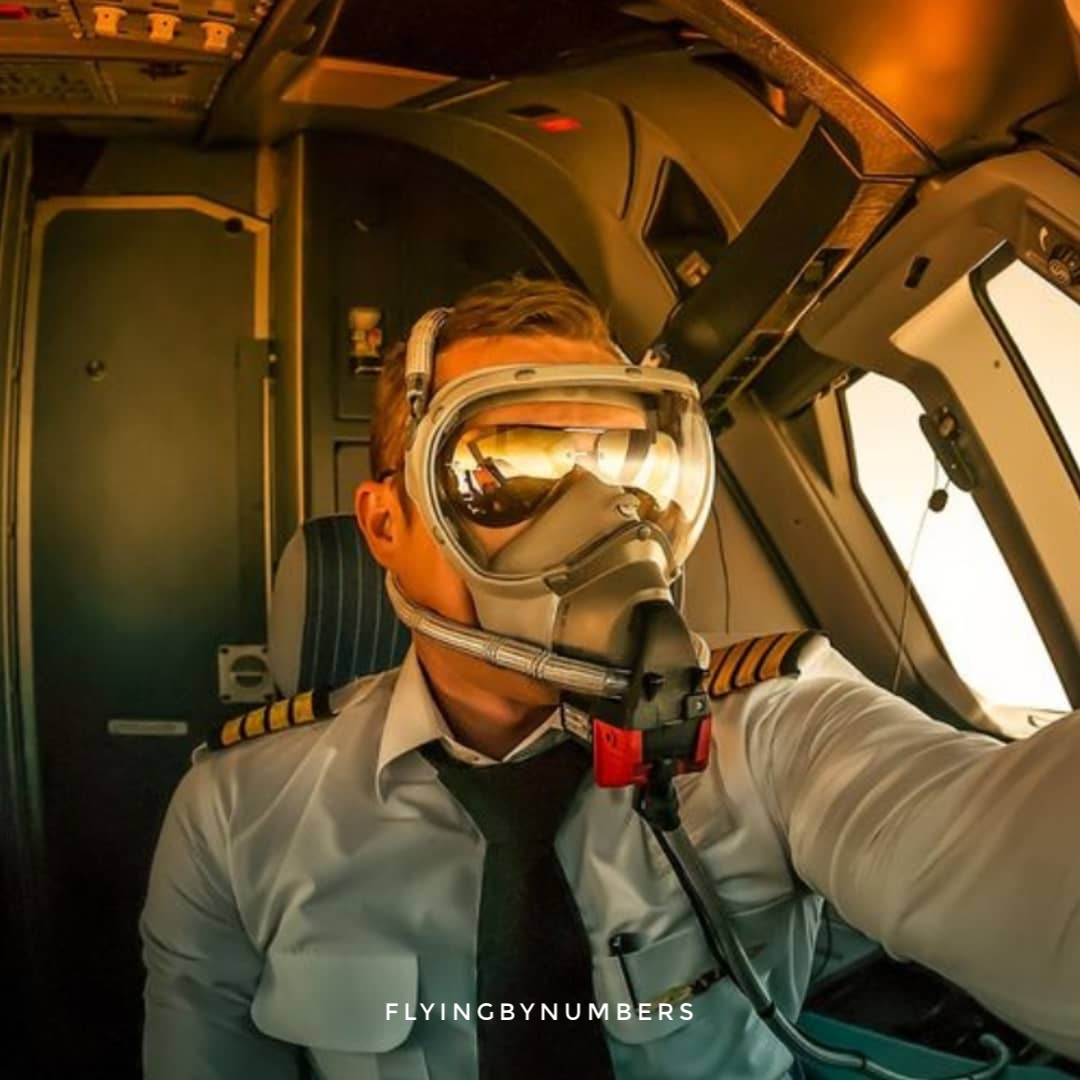
The difference between the two systems is significant:
Summary
In conclusion, airline pilots do have full face oxygen masks similar to fighter pilots. They are just hidden away and only ever used during emergencies!
Are airline pilots oxygens masks different to the passengers? Yes, airlines have two different oxygen systems for pilots and passengers because they have different needs:
Do you have any questions about pilot oxygen masks or how they work? Please let us know!
